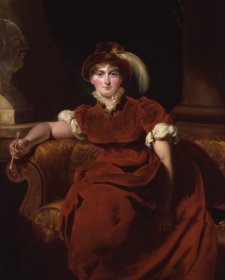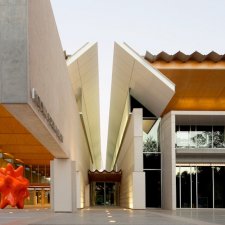- About us
- Support the Gallery
- Venue hire
- Publications
- Research library
- Organisation chart
- Employment
- Contact us
- Make a booking
- Onsite programs
- Online programs
- School visit information
- Learning resources
- Little Darlings
- Professional learning
Sir George Murray (1772-1846) is the man for whom the Murray River was named. Murray was educated in his native Scotland and in Geneva before becoming an ensign in the 71st regiment in early 1789. Transferring to a number of other outfits, he served in Flanders, the West Indies, Egypt and Portugal before joining Wellington’s staff in Spain. In 1813, having survived the Peninsular war, he was made KCB. The following year he was made governor of the Canadian colonies, but he soon elected to rejoin the army in Flanders, remaining there as chief of staff until 1818. During his subsequent five years as governor of the Royal Military College, Sandhurst, he was elected to parliament; he commanded Ireland from 1825 to 1828. For the next two and a half years he was secretary of state for the colonies. During this time, in August 1829, Western Australia was founded. Murray provided Captain Stirling – who was anxious about French claims - with instructions for how to settle the colony, which was named Perth in honour of Murray’s place of origin and House of Commons seat. Murray also recommended some of his friends from Perthshire as public servants and settlers. In 1829-1830 Charles Sturt travelled down the Murrumbidgee to its junction with a big river – its name recorded by Major Thomas Mitchell as the ‘Millewah’ – which he called the Murray in Sir George Murray’s honour. A lengthy account of Murray’s successes as a soldier and shortcomings as a politician is provided by David R Fisher in The History of Parliament: the House of Commons 1820-1832, 2009.
Sir Thomas Lawrence painted Murray in 1812, and began another portrait of him in 1829. He also painted Murray’s natural daughter, Louisa (‘Miss Murray’). Murray was a pall-bearer at Lawrence’s funeral in 1830.
John Cochran, Scottish portrait miniaturist and engraver, exhibited his portraits at the Royal Academy between 1821 and 1823. His steel plate engravings appeared in the four-volume National Portrait Gallery (1820), the Land of Burns (1840) and Wright’s Gallery of Engravings (1844-1846). He also painted Scottish landscapes. The National Portrait Gallery, London, has dozens of Cochran’s engravings. The National Portrait Gallery of Australia currently has three.
Collection: National Portrait Gallery
Purchased 2018



On one level The Companion talks about the most famous and frontline Australians, but on another it tells us about ourselves.



Anne Sanders writes about the exhibitions Victoria & Albert: Art & Love on display at the Queen's Gallery, Buckingham Palace and the retrospective of Sir Thomas Lawrence at the National Portrait Gallery, London.



Visit us, learn with us, support us or work with us! Here’s a range of information about planning your visit, our history and more!